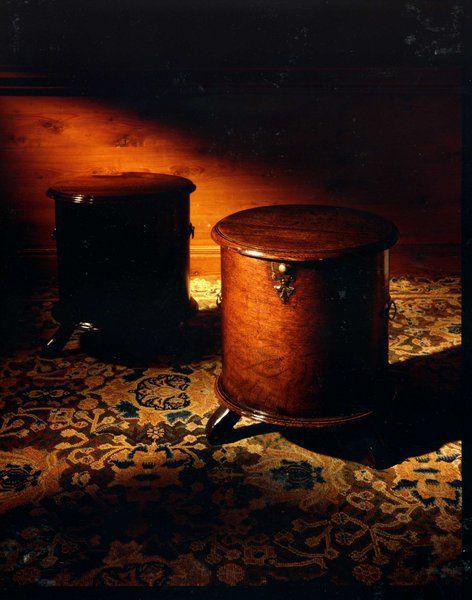A rare, matched pair of early-18th century, Norfolk, oak drum close-stool
10485
The plank top with a moulded edge. The interior with commode removed, added blocks to support a pot, and a later hinge. The cylindrical body with original escutcheon and possibly later 18th century carrying handles. Standing on original stile feet. Excellent original colour and patina. English, first quarter of the 18th century.
Drum-shaped close-stools are unique to the Norfolk region and this, in conjunction with their utilitarian nature, accounts for their extreme rarity today. Given these factors, this piece has survived in remarkable condition.
From the end of the 15th century movable close stools were used in palaces and great houses superseding the garde-robes or structural privies contrived within the walls which were the only convenience of this kind afforded by the primitive hygiene of medieval times. These close stools were among the varieties of furniture which at this time were provided by coffer-makers to the crown. They were probably of box form and the Royal Wardrobe accounts of the period show that they were covered with velvet or 'fustian of Naples', studded with gilt nails and elaborately trimmed.
The box type remained in use, though no longer covered with fabric, into the early years of the 18th century, and a close stool from Dunham Massey dating from about 1710 is veneered with figured burr walnut, crossbanded and bordered with ebony. In the late-Stuart period another variety, joined and mounted on a turned stand, appears to have been employed although surviving examples are rare.
18th Century
1725
Oak
England
One was sold to Handel's House Museum. A circular close stool, probably similar to this piece, is recorded in the inventory of Handel's House, 25 Brook Street, London, which is currently being restored as a museum










